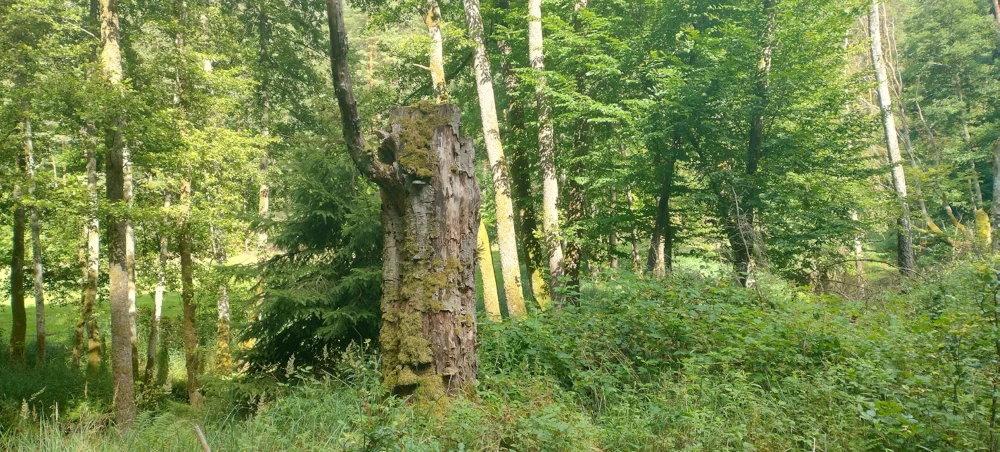Mycorrhiza and climate change
nr katalogowy: 152567
10.15199/2.2025.1.3
Streszczenie
Stan zagrożenia klimatycznego, osiągnął punkt krytyczny, co może mieć nieodwracalne skutki dla planety i ludzkości. W obliczu tego kryzysu eksperci wzywają do natychmiastowych działań. Przyroda, w tym rośliny, gleba i oceany, pełni ważną rolę w łagodzeniu zmian klimatycznych poprzez pochłanianie dwutlenku węgla. Lasy, zwłaszcza tropikalne, są kluczowe w tym procesie, ale ich zdolność do absorpcji CO2 słabnie. Z kolei gleba, która przechowuje węgiel, może stać się źródłem emisji w wyniku suszy, a oceany, największe pochłaniacze CO2, tracą zdolność do absorpcji gazu w wyniku topnienia lodowców i zakwaszenia wód. Zdolność Ziemi do neutralizowania CO2 maleje, co może przyspieszyć globalne ocieplenie. Z tego powodu konieczne jest wsparcie naturalnych pochłaniaczy węgla, w postaci technologii CCS (wychwytywanie i składowanie CO2). Jednak ich wdrożenie na szeroką skalę jest kosztowne i nie zapewni osiągnięcia zerowej emisji netto bez udziału naturalnych ekosystemów, które pozostają kluczowe w walce ze zmianami klimatycznymi.
Abstract
The state of climate emergency has reached a critical point, which may have irreversible consequences for the planet and humanity. In the face of this crisis, experts are calling for immediate action. Nature, including plants, soil, and oceans, plays an important role in mitigating climate change by absorbing carbon dioxide. Forests, especially tropical ones, are key in this process, but their ability to absorb CO2 is weakening. Soil, which stores carbon, may become a source of emissions due to droughts, while oceans, the largest absorbers of CO2, are losing their ability to absorb the gas due to melting glaciers and ocean acidification. The Earth’s ability to neutralize CO2 is declining, which could accelerate global warming. For this reason, it is essential to support natural carbon sinks through CCS technologies (carbon capture and storage). However, their large-scale implementation is costly and will not ensure the achievement of net zero emissions without the involvement of natural ecosystems, which remain crucial in the fight against climate change.
Słowa kluczowe / Keywords
Bibliografia
[1] Carbon Capture and Storage. An unproven technology that cannot meet planetary CO2 mitigation needs. Institute for Energy Economics and Financial Analysis, https://ieefa.org/ccs, dostęp 21.12.2024
[2] Frelih-Larsen A., Riedel A., Hobeika M., Scheid A., Gattinger A., et al. 2022. Role of soils in climate change mitigation. Interim Report. Climate Change 56/2022. German Environment Agency: Dessau-Roßlau. https://www.ecologic.eu/18782
[3] Guterres A. 2024. Following three hottest days on record, secretary- general launches global action call to care for most vulnerable, protect workers, boost resilience using data, science. United Nations (25 July 2024). https://press.un.org/en/2024/sgsm22319. doc.htm
[4] Hua L., Jing L., Helong T., Yijun L. 2024. Impact of high temperature heat waves on ocean carbon sinks: Based on literature analysis perspective. Journal of Sea Research198, 102487.https://doi. org/10.1016/j.seares.2024.102487
[5] LarssonT.-B., Barbati A., Bauhus J., Van Brusselen J., Lindner M., et al. 2007. The Role of Forests in Carbon Cycle, Sequestration, and Storage. IUFRO-Newsletter. 5.
[6] Marinov I., Sarmiento J.L. 2004. The Role of the Oceans in the Global Carbon Cycle: An Overview. In: Follows M., Oguz T. (eds). The Ocean Carbon Cycle and Climate. NATO Science Series, vol 40. Springer, Dordrecht. https://doi.org/10.1007/978-1-4020-2087- 2_8
[7] Pan Y., Birdsey R.A., Phillips, O.L., Houghton R. A., Jingyun F. et al. 2024. The enduring world forest carbon sink. Nature 631: 563– 569.https://doi.org/10.1038/s41586-024- 07602-x
[8] Piyu K., Ciais P., Sitch S., Li W., Bastos A. et al. 2024. Low latency carbon budget analysis reveals a large decline of the land carbon sink in 2023. National Science Review11(12), nwae367. https://doi.org/10.1093/nsr/ nwae367
[9] Ripple W. J., Wolf Ch., Gregg J. W., Rockström J., Mann M. E., et al. 2024. The 2024 state of the climate report: Perilous times on planet Earth. BioScience74(12): 812–824. https:// doi.org/10.1093/biosci/biae087
[10] Trees and land absorbed almost no CO2 last year. Is nature’s carbon sink failing? The Guardian, 16 October 2024. https://www.theguardian. com/environment/2024/oct/14/ nature-carbon-sink-collapse-global-heatingmodels- emissions-targets-evidence-aoe, dostęp 21.12.2024
[11] United Nations Environment Programme. 2023. Emissions Gap Report 2023: Broken Record: Temperatures Hit New Highs, yet World Fails to Cut Emissions (Again). https:// www.unep.org/resources/emissions-gapreport- 2023, dostęp 21.12.2024
